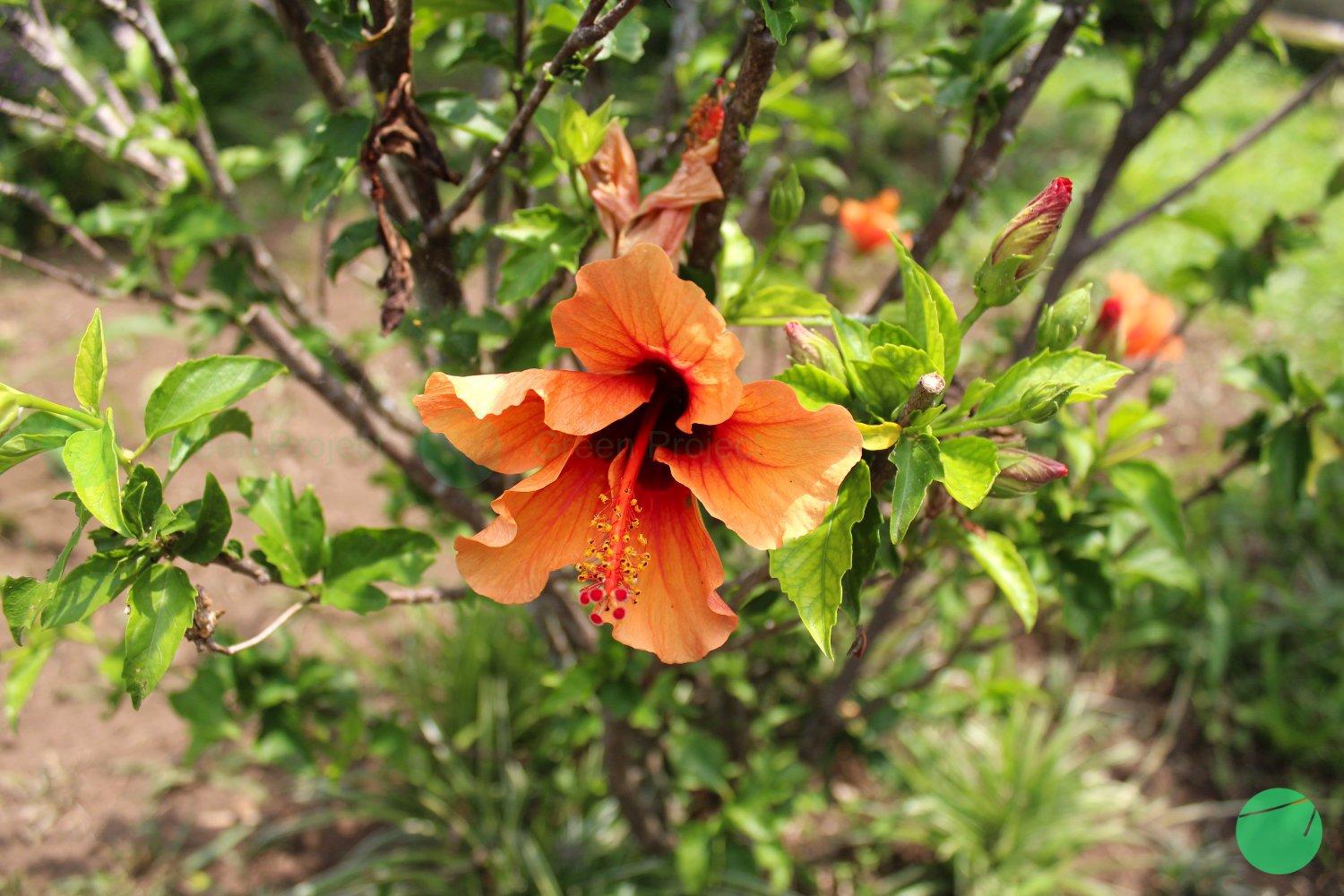Naming Identity
Kembang sepatu is scientifically named in Latin as Hibiscus rosa-sinensis. Internationally in English the hibiscus plant is known as Chinese Hibiscus, shoe-black plant or China rose.
The hibiscus plant in Indonesia has many other names. Among them are amburanga, bala bunga, bunga rebong, bungong raja, capatu, gerasa, hua hualo, kando, kembang wera, kunyanga, mandhelaka, naribhang, soma - soma, ubo - ubo, rondee, wara wari, waribang or wora wari.
The genus name, Hibiscus comes from a Greek word 'hibiscus' or 'ibiscum' which refers to living together with Ibis storks in swamps (Vélez-Gavilán, 2022).
Hibiscus is a plant that is declared the national flower of Malaysia. In Malay, this plant is known as bunga raya which means "big flower" or "celebration flower" (Sottosanti, 2023). in India, the flowers are also used as hair ornaments and in religious ceremonies.
Taxonomy
Kingdom | Plantae |
Phylum | Tracheophyta |
Class | Magnoliopsida |
Order | Malvales |
Family | Malvaceae |
Genus | Hibiscus |
Species | Hibiscus rosa-sinensis |
Origin
Until now, it is still not certain where this plant comes from, but it grows mostly in tropical areas in countries in Southeast Asia, including Indonesia and Malaysia, as well as East Asia, including China.
Shape Description
Hibiscus is a shrub or small tree that can grow to a height of 1.2 to 3 meters with a width of about 1.5 to 2.4 meters. The evergreen leaves are usually not lobed and have serrated edges. Bright green in color, about 5 to 12 cm long by 3 to 8.5 cm wide.
Hibiscus flowers are funnel-shaped and usually red, although some cultivars are pink, orange, yellow, or white. The flowers have 4 to 5 petals, with conspicuous stamens (male structure) fused into a central tube around the pistil (female structure). Green epicalyx surrounds the base of the petals. The flowers may be single or double, depending on the hybrid or cultivar, and vary in size from 5 to 25 cm in diameter. Although a given flower lasts only one day, the plant blooms seasonally and attracts a variety of pollinators, including hummingbirds. Like other members of the genus, this pollen is characteristically spiny when viewed under a microscope. The fruit is in capsule form.
Benefits of Hibiscus for Health
Hibiscus plants are generally cultivated as ornamental plants. However, several studies have been carried out to study the contents contained in the plant.
Hibiscus leaves are said to be eaten raw or cooked and are sometimes eaten as a vegetable like spinach. The leaves are known to be rich in nutritional value. Meanwhile, the stems are used as fiber and the extract from the flowers is used as food coloring, shoe blackener and as black mascara (Vélez-Gavilán, 2022).
The edible flowers are used in tea and as an attractive flavoring and garnish. Researchers are studying extracts of hibiscus and other hibiscus species for potential anticancer effects and as a potential treatment for diabetes (Sottosanti, 2023).
On the other hand, traditional Indian medicine as in Ayurveda, Siddha, and Unani as well as traditional Chinese medicine have used hibiscus plants to help treat postpartum relapses, boils, scabs, inflammation, swelling due to cancer, mumps, venereal diseases, fever, coughs, colds. , relieves spasms and excessive menstrual pain. The flowers are used as an aphrodisiac, anti-spermatogenic, anti-fertility, embryotoxic, abortifacient, emmenagogue and cooling agent. The root extract is used to treat eye pain (Vélez-Gavilán, 2022).
Varieties
Chinese Hibiscus 'Red Dragon'

Chinese Hibiscus 'Peach'
